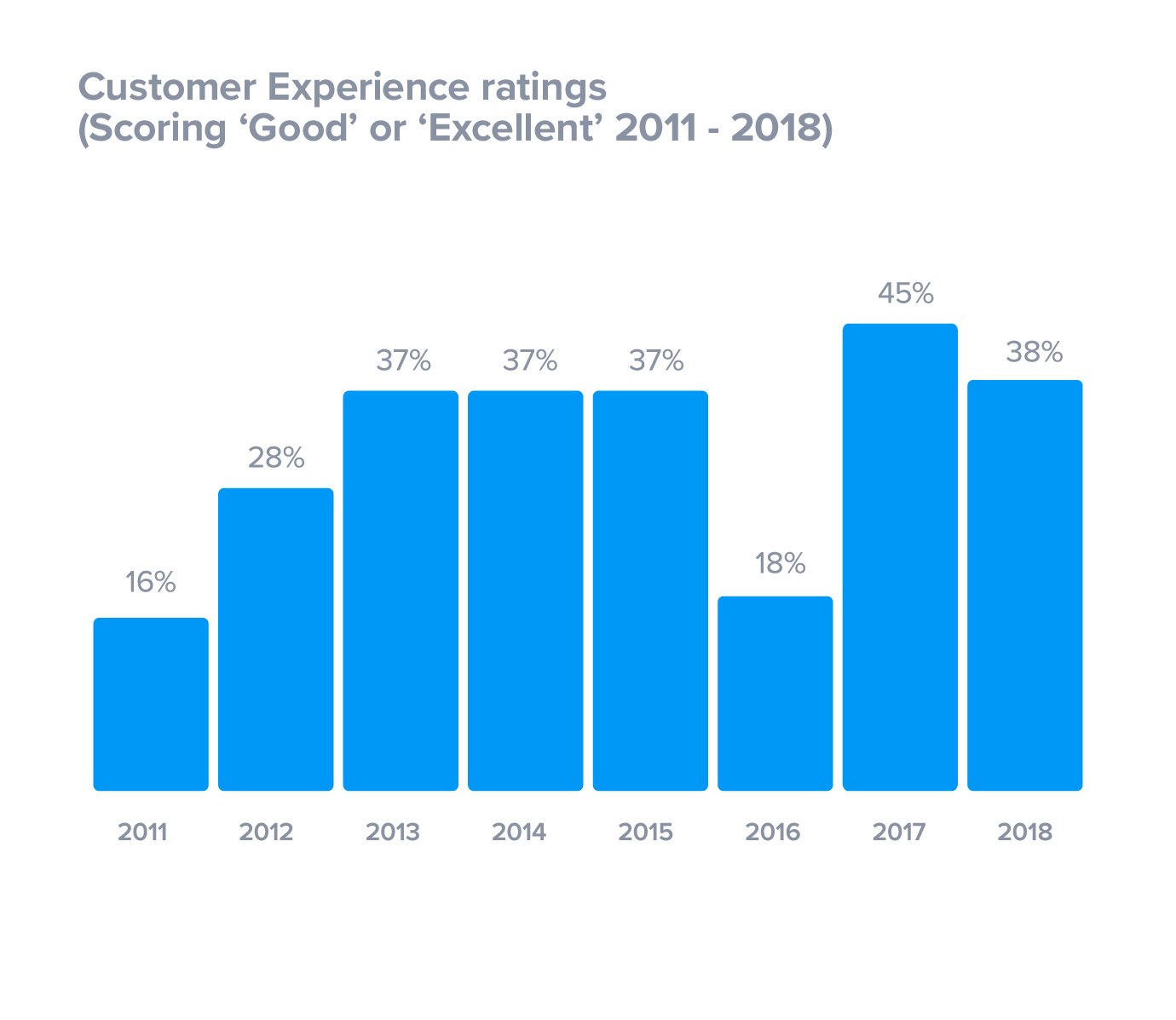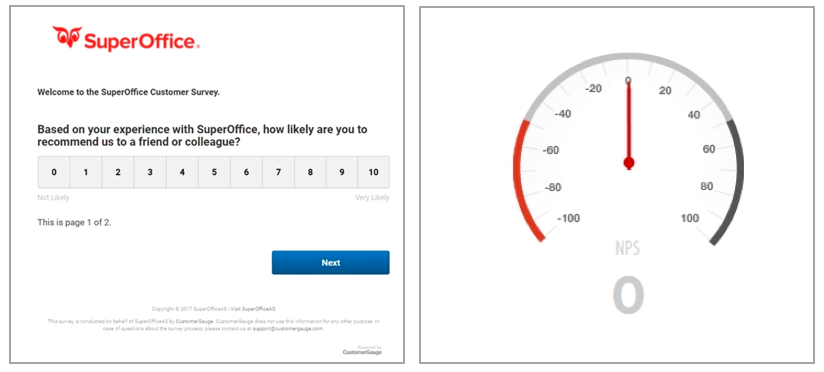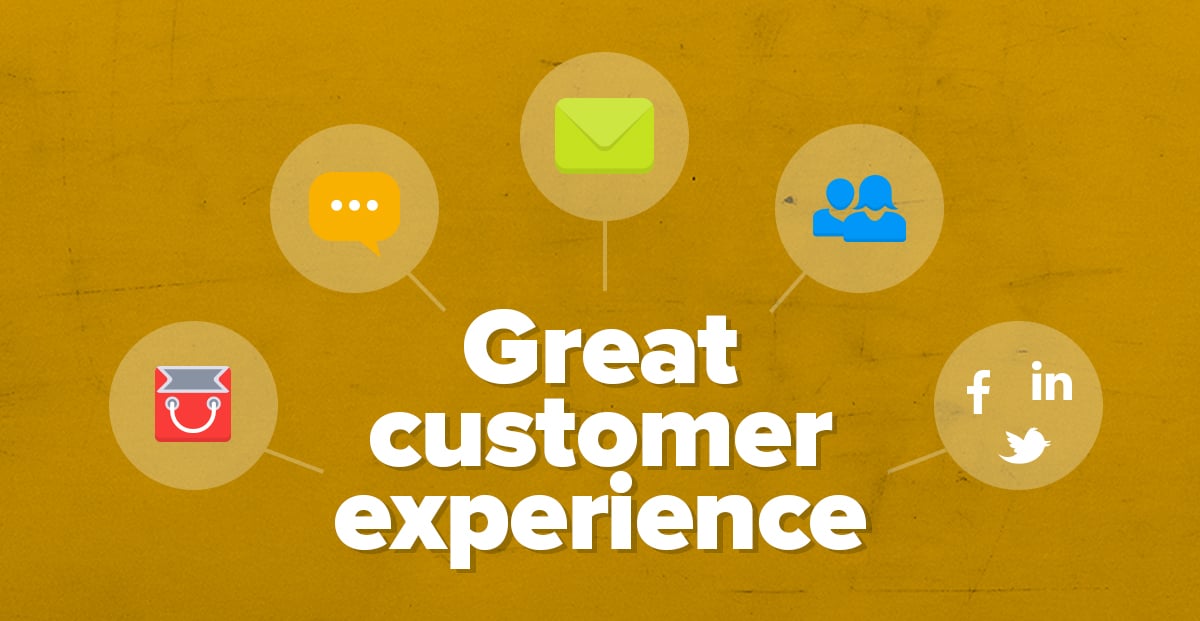Post summary:
- Customer experience is the most exciting opportunity to businesses next year and the reason is simple; the companies that focus on customer experience reduce churn and increase revenues – leading to higher profits!
- For many, customer service and customer experience are seemingly interchangeable. Yet, one is a single touchpoint with a brand, while the other impacts feelings and emotion, and encompasses the entire customer journey.
- The customer experience impacts all areas of your business, but how you get started? We provide you with 7 steps, along with examples and case studies to help you create a great customer experience strategy.
The Digital Marketing Trends Report by Econsultancy and Adobe asked companies to indicate the single most exciting opportunity for their organization in the upcoming year – and once again, the same answer came out on top.
Can you guess what the most exciting opportunity for a business is?
If you guessed ‘customer experience’ (or CX), you guessed right.

It’s no surprise that customer experience is a high.
Research by American Express found that 60% of customers are willing to pay more for a better experience.
While recently, the Temkin Group published a study and found that companies that earn $1 billion annually can expect to earn, on average, an additional $700 million within 3 years of investing in customer experience.
That’s a 70% increase in revenue within 36 months!
Put simply:
Companies who successfully implement a customer experience strategy achieve higher customer satisfaction rates, reduced customer churn and increased revenues.
What is customer experience?
Customer experience (CX) is defined by interactions between a customer and an organization throughout their business relationship. An interaction can include awareness, discovery, cultivation, advocacy, purchases and service.
Customer experience is an integral part of Customer Relationship Management (CRM) and the reason why it’s important is because a customer who has a positive experience with a business is more likely to become a repeat and loyal customer.
In fact, a study by Oracle found that 74% of senior executives believe that customer experience impacts the willingness of a customer to be a loyal advocate. And the customer experience statistics don’t stop there. If you want your customers to stay loyal, you have to invest in their experience!

Simply put, happy customers remain loyal.
It makes sense, right?
The happier you are with a brand, the longer you stay with them. And so if you treat your customers poorly and ignore their customer service emails, then they are more likely to leave. This is why companies that deliver a superior customer service and experience outperform their competition.
How is customer experience different from customer service?
In most cases, a customer’s first point of contact with a company is usually through interacting with an employee (either by visiting a store or by speaking on the phone). This gives your business an opportunity to deliver excellent customer service.
However, customer service is only one aspect of the entire customer experience.
For example, if you book a vacation on the phone and the person you are speaking with is friendly and helpful, that’s good customer service. Yet, if your tickets arrive early and the hotel upgrades your room, then that’s a good customer experience.
That’s how the two are different!
Like most things in today’s market place, customer experience has changed – it’s more than person-to-person service and thanks to technology, companies can connect with their customers in new and exciting ways.
For example, using CRM software, you can view customer purchase history and to predict future needs even before the customer knows they need it. Having the ability to predict a future need will let you be proactive and attentive and, it means you can do things like;
- Provide related products based on purchase history
- Create and deliver targeted email marketing campaigns
- Understand the 360 degree view of the customer
Customer service is still as important as ever, it’s no longer the sole focus of customer experience. Now, the customer experience brings new ways to strengthen customer relationships through technological breakthroughs.
How important is customer experience?
A business cannot exist without its customers, and this is why companies are focusing on how to win new customers and perhaps more importantly, retain existing customers.
A survey by Bloomberg Businessweek found that “delivering a great customer experience” has become a top strategic objective. And a recent Customer Management IQ survey found that 75% of customer experience management executives and leaders rated customer experience a ‘5’ on a scale of 1-5 (5 being of the highest importance).

The challenge here is that even though it’s a high priority, many companies are failing.
When Bain & Company asked organizations to rate their quality of customer experience, 80% believe they are delivering a superior experience. This is compared to only 8% of customers who believe they are receiving a great customer experience.
So how many brands are truly delivering an excellent customer experience?
Surprisingly, not too many.
In fact, less than half of all companies deliver a good (or better) customer experience.
Each year, the Temkin Group release their Customer Experience Ratings study.
By analyzing feedback from 10,000 consumers and recording their experience with over 300 companies, the latest report shows a decline in the number of companies that scored a ‘good’ or ‘excellent’ rating, down from 45% in 2017 to only 38% in 2018.

Customer expectations are rising, and faster than the speed that companies can improve their customer experience. Customers expect every interaction as the best experience they have with any company – not just yours!
So, the question remains, how can your organization create a great customer experience?
7 ways to improve the customer experience
Let’s take a look at seven ways to create a great customer experience strategy to help you improve customer satisfaction, reduce churn and increase revenues.
1. Create a clear customer experience vision
The first step in your customer experience strategy is to have a clear customer-focused vision that you can communicate with your organization. The easiest way to define this vision is to create a set of statements that act as guiding principles.
For example, Zappos use their Zappos core family values and these values are embedded into their culture; which includes delivering wow through service, be humble and embracing change.
Once these principles are in place, they will drive the behavior of your organization. Every member of your team should know these principles by heart and they should be embedded into all areas of training and development.
2. Understand who your customers are
The next step in building upon these customer experience principles is to bring to life the different type of customers who deal with your customer support teams. If your organization is going to really understand customer needs and wants, then they need to be able to connect and empathize with the situations that your customers face.
One way to do this is to create customer personas and give each persona a name and personality. For example, Anne is 35 years old; she likes new technology and is tech savvy enough to follow a video tutorial on her own, whereas John (42 years old) needs to be able to follow clear instructions on a web page.
By creating personas, your customer support team can recognize who they are and understand them better. It’s also an important step in becoming truly customer centric.
3. Create an emotional connection with your customers
You’ve heard the phrase “it’s not what you say; it’s how you say it”?
Well, the best customer experiences are achieved when a member of your team creates an emotional connection with a customer.
One of the best examples of creating an emotional connection comes from Zappos, when a customer was late on returning a pair of shoes due to her mother passing away. When Zappos found out what happened, they took care of the return shipping and had a courier pick up the shoes without cost. But, Zappos didn’t stop there. The next day, the customer arrived home to a bouquet of flowers with a note from the Zappos customer service team who sent their condolences.
Research by the Journal of Consumer Research has found that more than 50% of an experience is based on an emotion as emotions shape the attitudes that drive decisions.
Customers become loyal because they are emotionally attached and they remember how they feel when they use a product or service. A business that optimizes for an emotional connection outperforms competitors by 85% in sales growth.
And, according to a recent Harvard Business Review study titled “The New Science of Customer Emotions“, emotionally engaged customers are:
- At least three times more likely to recommend your product or service
- Three times more likely to re-purchase
- Less likely to shop around (44% said they rarely or never shop around)
- Much less price sensitive (33% said they would need a discount of over 20% before they would defect).
4. Capture customer feedback in real time
How can you tell if you are delivering a wow customer experience?
You need to ask – And ideally you do this by capturing feedback in real time. Post-interaction surveys and similar customer experience tools can be delivered using a variety of automated tools through email and calls.
And of course, it’s even possible to make outbound calls to customers in order to gain more insightful feedback.
It’s important to tie customer feedback to a specific customer support agent, which shows every team member the difference they are making to the business.
5. Use a quality framework for development of your team
By following the steps above, you now know what customers think about the quality of your service compared to the customer experience principles you have defined. The next step is to identify the training needs for each individual member of your customer support team.
Many organizations assess the quality of phone and email communication, however, a quality framework takes this assessment one step further by scheduling and tracking your teams development through coaching, eLearning and group training.
6. Act upon regular employee feedback
Most organizations have an annual survey process where they capture the overall feedback of your team; how engaged they are and the businesses ability to deliver an exceptional service.
But, what happens in the 11 months between these survey periods?
Usually, nothing happens. And this is where continuous employee feedback can play a role using tools that allow staff to share ideas on how to improve the customer experience and for managers to see how staff is feeling towards the business.
For example, using project management software or social media tools, you can create a closed environment where your organization can leave continuous feedback.
7. Measure the ROI from delivering great customer experience
And finally, how do you know if all this investment in your teams, process and technology are working and paying off?
The answer is in the business results.
Measuring customer experience is one of the biggest challenges faced by organizations, which is why many companies use the “Net Promoter Score” or NPS, which collects valuable information by asking a single straightforward question:
“Would you recommend this company to a friend or relative?”

NPS, which was created by Rob Markey and Fred Reichheld at Bain and Company, is a highly suitable benchmark for a customer experience metric because a lot of companies use it as the standard customer experience measurement. And the fact that it’s simple to implement and measure makes the NPS a favorite with company boards and executive committees.
Conclusion
Customer expectations are higher than ever and word of mouth travels fast!
And as the customer becomes even more empowered, it increases the importance of the customer service experience.
Customer experience is an area that needs constant nurturing and care and with a greater focus on customer experience strategy, companies will realize a positive impact on customer loyalty, higher retention and increased revenues.
P.S. Start improving your customer experience strategy right now by downloading seven free customer service email templates.

Posting Komentar untuk "7 Ways to Create a Great Customer Experience Strategy"